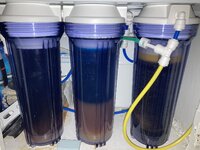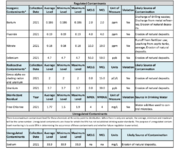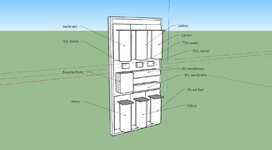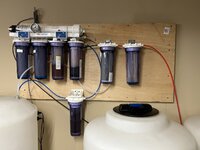So here's what I'm thinking so far. The board would be 24" wide and 48" tall. This is just the front part that would attach to a back part. The front part will be on hinges on one side so you can open it up and see inside the little box that I'm making. Every chamber will have 90 degree elbows going back behind the main board, where the birds nest of tubes will be hidden. The lip of the front board will have blue LEDs to backlight it and make it look like it's floating. When the booster pump is turned on, aka making water, a red string will kick on too to turn the light purple. Not sure how I want to do the back bracket yet though.
The TDS meters will all be triple meters and measure the TDS as it leaves every stage.
On a side not, they make stainless steel canister to add to an RO unit, which it would be amazing looking to replace them all with considering you don't really need to see inside to begin with. However, they're about $80-90 a pop, and at six chambers, that wouldn't be cheap.

















